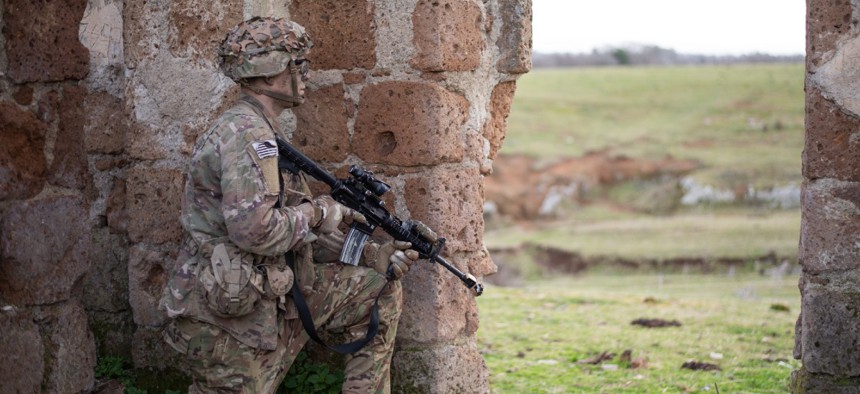The Army Wants Technology that Can See Through Walls—and Identify People on the Other Side

John Yountz/Army
This sounds like science fiction—but for soldiers, it could soon be a reality.
People can’t see through walls but the Army wants to pioneer next-level technology that will help soldiers do exactly that—with the added bonus of instantaneously offering advanced, penetrating insights that go far beyond what meets the eye.
According to a recent request for information, the Army is accepting white papers to identify commercially available technologies that could help spur its development of a “sense through the wall system.” In the Army’s ideal world, that system would distinguish for soldiers exactly what—and precisely who—is on the other side of the solid structures before them.
“The intent of this market survey is to identify potential man-portable systems that give the Soldier the ability to detect, identify, and monitor persons, animals, and materials behind multi-leveled obstruction(s) from a long standoff range,” officials wrote in the special notice. “The sensor system will also be able to map the structure and detect hidden rooms, passages, alcoves, caches, etc. including those underground.”
This is neither the government’s or military branch’s first attempt to produce advanced technologies with see-through capabilities, but the contents of the solicitation indicate that what insiders aim to create now was once only imaginable in science fiction. According to the RFI, insiders want a system and devices that will support soldiers as they make critical life-or-death decisions. The technology would give them the ability to “track, locate, isolate, range, and count personnel and animals in a building or structure.” It would also need to classify whether people on the inside are sitting or standing, and simultaneously confirm whether they are a “friend [or] foe” by instantaneously tapping into their biometric data. Further, soldiers would also rely on it to determine whether there are any traps, explosives or hidden weapons within the structures and collect data that can be used to create 3D maps of the buildings in question.
The system will also need to penetrate through dense foliage, Army said, and all of the information it collects will need to be accessible by soldiers through wireless tablets.
“RFIs should address what the path forward is for the U.S. Army to meet this goal,” officials wrote.
The Army’s Special Operations Forces, Combat Capability Development Command, Night Vision and Electronic Sensors Directorate, and Command, Control, Communications, Computers, Cyber, Intelligence, Surveillance, and Reconnaissance, or C5ISR, are collaborating on the project.
The response date is set for March 11.






